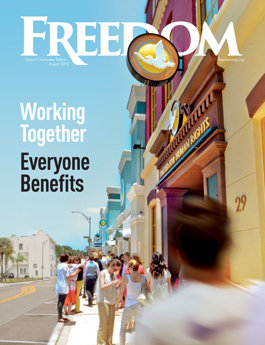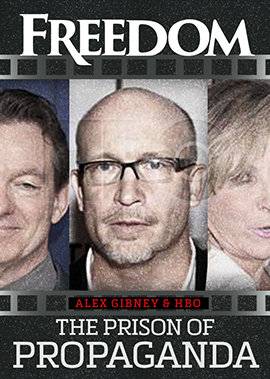They should be driving a hearse.
Just as easy as calling an Uber for a lift to the movies, as simple as ordering pizza from Grubhub, teenagers can find dealers in methamphetamine, ketamine, oxycodone, MDMA (Ecstasy), Adderall and others, advertising and marketing their wares on social media.
This is not your ex-hippie grandpa’s old-time drug scene, when you had to know somebody who knows somebody just to score some pot.

No, these drug dealers are high-tech web-savvy superstars, peddling fake, illegally manufactured pharmaceuticals and, all too often, death itself.
While certainly bad enough on their own, these illegally produced pharmaceuticals are frequently contaminated with fentanyl, a synthetic opioid drug 50 times stronger than heroin and 100 times stronger than morphine that is deadly in tiny amounts.
Every single day, 150 people die from overdoses related to synthetic opioids like fentanyl.
In 2021, over 1,500 kids under 20 died from the drug, four times as many as in 2018. Fentanyl poisoning has become a leading cause of death among children.
But where exactly do they find it online? How does this killer drug, this satanic destroyer of children, make its way into their bloodstream?
Simple: through social media sites with innocent, cute-sounding names like Snapchat, TikTok, Facebook, Telegram and Instagram.
“Social media platforms have become a major venue for drug distribution.”
Kids use them all the time to talk with their friends, play games, help with homework, flirt their way into new romances and, these days, to find connections for dangerous and illegal drugs.
In 2022, the Colorado Department of Law released a report on the prevalence of fentanyl in the state and its sales through internet social media platforms. The report was far-reaching and the first of its kind.
“The rising influence of social media and the escalating fentanyl crisis are painfully interconnected,” Colorado Attorney General Philip J. Weiser wrote in a foreword to the report.
“Social media platforms have become a major venue for drug distribution. Where once a teen might have had to seek out a street dealer, hassle friends or learn to navigate the dark web to access illicit drugs, young people can now locate drug dealers using their smartphones—with the relative ease of ordering food delivery or calling a ride-share service.”

Families of 60 young people who died from fentanyl overdoses are suing Snapchat because of the platform’s use of “disappearing messages,” which make it easier for online drug dealers to hide their activities.
“Snap [Inc.] and Snapchat’s role in illicit drug sales to teens was the foreseeable result of the designs, structures and policies Snap chose to implement to increase its revenues,” the lawsuit states.
The problem is big enough that a new law recently passed in California requires schools to notify parents of the fact that social media platforms are being used to market and sell deadly synthetic drugs like fentanyl to their children.
“Fentanyl is impacting every part of the United States.”
The federal government is also taking notice: Senator Jeanne Shaheen of New Hampshire and Senator Roger Marshall of Kansas have introduced a bipartisan bill that would require social media companies to report illegal drug-selling activity to police.
“We must do more at the federal level to combat the flow of fentanyl into our communities, and it starts by holding social media companies accountable for their part in facilitating illicit drug sales,” Senator Shaheen said.
It may be harder than it sounds, given that Section 230 of the Communications Decency Act of 1996 gives immunity from civil liability to social media for the content posted by users.
But the Department of Justice said it “has concluded that the time is ripe to realign the scope of Section 230 with the realities of the modern internet. Reform is important now more than ever.”

Here’s why he’s right: The Colorado report noted that as many as six out of 10 illegally manufactured drugs examined contained potentially lethal amounts of fentanyl.
Drug dealers add fentanyl to their illegally manufactured pharmaceuticals because it is cheaper than other opioids and because it is also highly addictive, resulting in a steady flow of repeat customers.
Nabarun Dasgupta, epidemiologist at the University of North Carolina at Chapel Hill, said, “Fentanyl is good for business if you layer addiction into it.”
In one tragically typical story, Angela King and Mike O’Kelley lost their 20-year-old son, Jack, to drugs last Thanksgiving. Mike and Angela later found text messages between Jack and a drug dealer. He bought what he thought was Xanax, oxycodone and a gram of cocaine.
But he died from fentanyl poisoning.
Fentanyl mostly comes in to the US from Mexico, where it is manufactured and marketed by drug cartels. The cartels obtain the precursor chemicals needed to make fentanyl from China. Little chemistry skill is required to manufacture the drug.
In a recent investigation, Reuters reporters obtained a fentanyl precursor chemical, “1-boc-4-piperidone,” from a Chinese supplier. For $3,600, they obtained enough precursor chemicals and equipment to make at least $3 million worth of fentanyl—a very conservative estimate for what the drug would actually rake in on the street.
Anne Milgram, head of the US Drug Enforcement Administration, said, “Fentanyl is impacting every part of the United States. It’s impacting our communities. It’s impacting our kids. It’s impacting our economy.
“One of the things that I’ve learned over the last few years that really stays with me is: every single week we lose 22 teens between the ages of 14 and 18. Every single week we’re basically losing a high school class somewhere in America.”






















